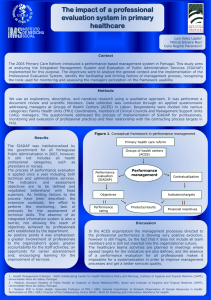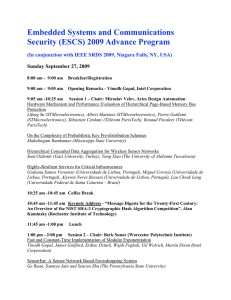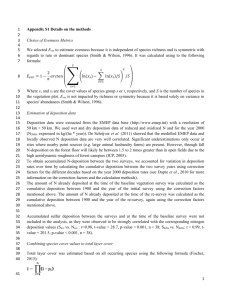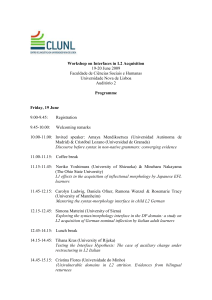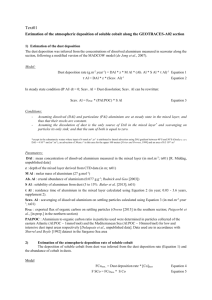Measuring the impact of dust deposition in a mixed landscape
advertisement
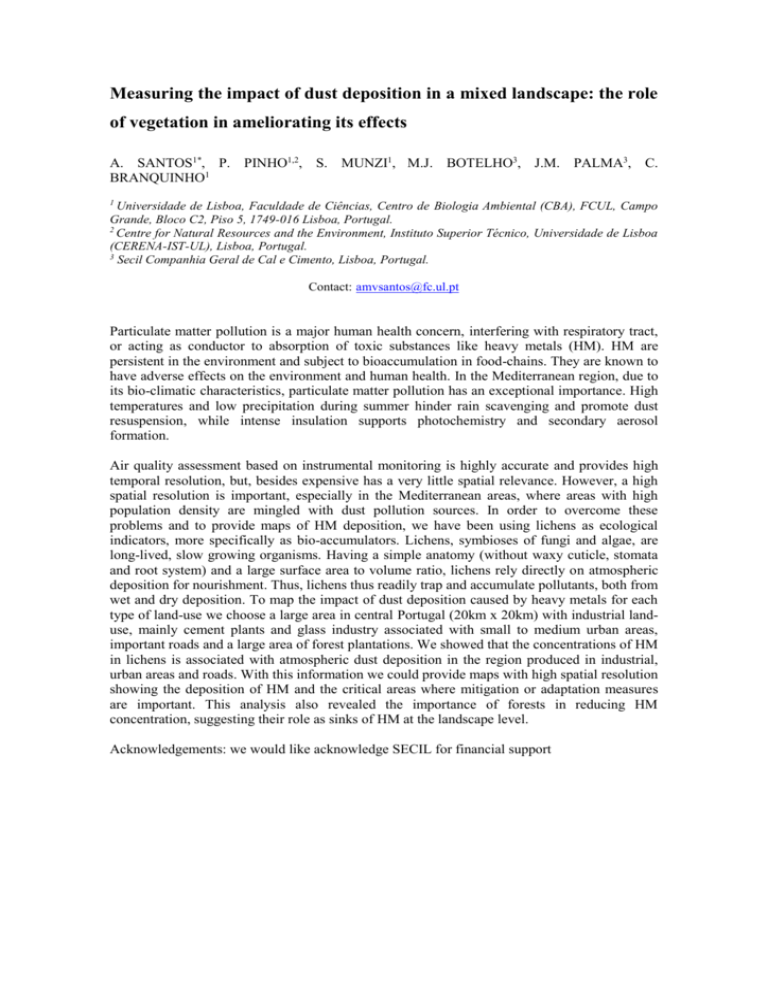
Measuring the impact of dust deposition in a mixed landscape: the role of vegetation in ameliorating its effects A. SANTOS1*, P. PINHO1,2, S. MUNZI1, M.J. BOTELHO3, J.M. PALMA3, C. BRANQUINHO1 1 Universidade de Lisboa, Faculdade de Ciências, Centro de Biologia Ambiental (CBA), FCUL, Campo Grande, Bloco C2, Piso 5, 1749-016 Lisboa, Portugal. 2 Centre for Natural Resources and the Environment, Instituto Superior Técnico, Universidade de Lisboa (CERENA-IST-UL), Lisboa, Portugal. 3 Secil Companhia Geral de Cal e Cimento, Lisboa, Portugal. Contact: amvsantos@fc.ul.pt Particulate matter pollution is a major human health concern, interfering with respiratory tract, or acting as conductor to absorption of toxic substances like heavy metals (HM). HM are persistent in the environment and subject to bioaccumulation in food-chains. They are known to have adverse effects on the environment and human health. In the Mediterranean region, due to its bio-climatic characteristics, particulate matter pollution has an exceptional importance. High temperatures and low precipitation during summer hinder rain scavenging and promote dust resuspension, while intense insulation supports photochemistry and secondary aerosol formation. Air quality assessment based on instrumental monitoring is highly accurate and provides high temporal resolution, but, besides expensive has a very little spatial relevance. However, a high spatial resolution is important, especially in the Mediterranean areas, where areas with high population density are mingled with dust pollution sources. In order to overcome these problems and to provide maps of HM deposition, we have been using lichens as ecological indicators, more specifically as bio-accumulators. Lichens, symbioses of fungi and algae, are long-lived, slow growing organisms. Having a simple anatomy (without waxy cuticle, stomata and root system) and a large surface area to volume ratio, lichens rely directly on atmospheric deposition for nourishment. Thus, lichens thus readily trap and accumulate pollutants, both from wet and dry deposition. To map the impact of dust deposition caused by heavy metals for each type of land-use we choose a large area in central Portugal (20km x 20km) with industrial landuse, mainly cement plants and glass industry associated with small to medium urban areas, important roads and a large area of forest plantations. We showed that the concentrations of HM in lichens is associated with atmospheric dust deposition in the region produced in industrial, urban areas and roads. With this information we could provide maps with high spatial resolution showing the deposition of HM and the critical areas where mitigation or adaptation measures are important. This analysis also revealed the importance of forests in reducing HM concentration, suggesting their role as sinks of HM at the landscape level. Acknowledgements: we would like acknowledge SECIL for financial support
